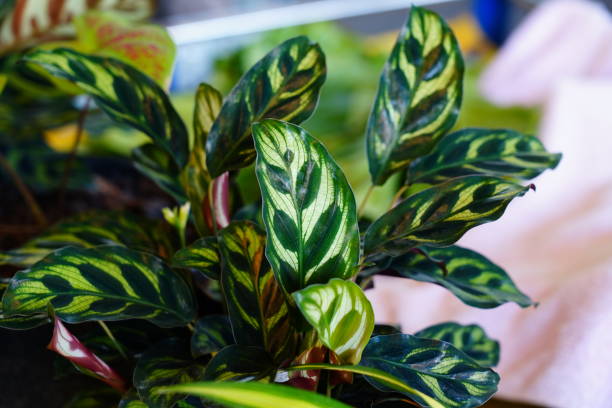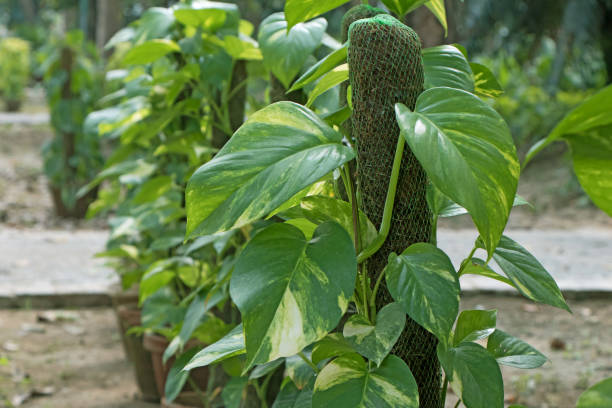Spider Lily: A Guide to Growing and Caring for this Stunning Flower

Lycoris, also known as Spider Lily, is a beautiful and unique flowering plant that is a popular addition to many gardens and landscapes. This plant is native to Japan and China and belongs to the Amaryllidaceae family, including other popular flowering plants like daffodils and amaryllis. Lycoris is known for its striking, spider-shaped flowers that bloom in red, pink, yellow, and white shades. These flowers are on leafless stems that add height and drama to any planting scheme. This article will explore the different types of Lycoris plants, their growing requirements, and how to care for them. Whether you are a seasoned gardener or a beginner, this guide will provide all the information you need to grow healthy and beautiful Spider Lilies in your garden or landscape.
More About Spider Lily

| Plant Name | Lycoris |
|---|---|
| Common Names | Spider Lily, Hurricane Lily, Surprise Lily |
| Botanical Name | Lycoris spp. |
| Plant Type | Bulbous perennial |
| Mature Size | 12-36 inches tall, 12-24 inches wide |
| Sun Exposure | Full sun to partial shade |
| Soil Type | Well-draining, loamy soil |
| Soil pH | 6.0-7.0 |
| Bloom Time | Late summer to early fall |
| Flower Colors | Red, pink, yellow, white |
| USDA Hardiness Zones | 6-10 |
| Native Area | Japan, China |
Spider Lily Care
Spider Lilies (Lycoris spp.) are relatively low-maintenance plants that are easy to care for. Here are some tips on how to grow and care for Spider Lilies:
Light
Spider Lilies prefer full sun to partial shade. They may benefit from some afternoon shade in hot climates to prevent the leaves from scorching.
Soil
Spider Lilies prefer well-draining, loamy soil rich in organic matter. The soil should be moist but not waterlogged.
Water
Spider Lilies are relatively drought-tolerant but need regular watering during their growing season. Water deeply once a week or when the top inch of the soil feels dry.
Fertilizer
Spider Lilies benefit from regular fertilization during the growing season. Use a balanced fertilizer once a month to encourage healthy growth and blooms.
Mulch
Adding a layer of organic mulch, such as shredded leaves or bark, around the base of the plants can help retain moisture in the soil and suppress weed growth.
Pruning
Spider Lilies do not require pruning, but you can remove dead or yellowing leaves to keep the plants looking tidy.
Winter Care
Spider Lilies are winter hardy and can tolerate frost and freezing temperatures. However, in colder climates, the bulbs may benefit from a layer of mulch or protective covering during winter.
Propagation
Spider Lilies can be propagated by division. Dig up the bulbs after the leaves have died back in the fall and separate the offsets. Replant the offsets immediately in well-draining soil.
Pests and Diseases
Spider Lilies are relatively pest and disease-resistant. However, they may be susceptible to bulb rot if planted in poorly-draining soil or overwatered. Watch out for slugs and snails, which may feed on the leaves and flowers.
Overall, Spider Lilies are a beautiful and easy-to-care-for plant that can add colour and interest to your garden or landscape. With the right growing conditions and a little care, they will reward you with stunning blooms year after year.
Types of Spider Lily
There are several different types of Spider Lily (Hymenocallis) that are commonly grown for their striking and unique blooms. Here are a few examples:
White Spider Lily (Lycoris albiflora)
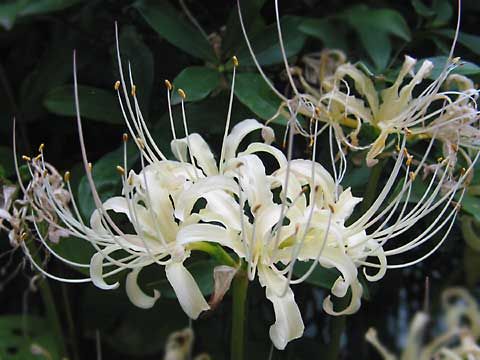
This species of Lycoris Spider Lily is characterized by its striking white flowers blooming in late summer or early fall. It can grow up to 18 inches tall and prefers well-drained soil in full sun to partial shade.
Golden Spider Lily (Lycoris aurea)
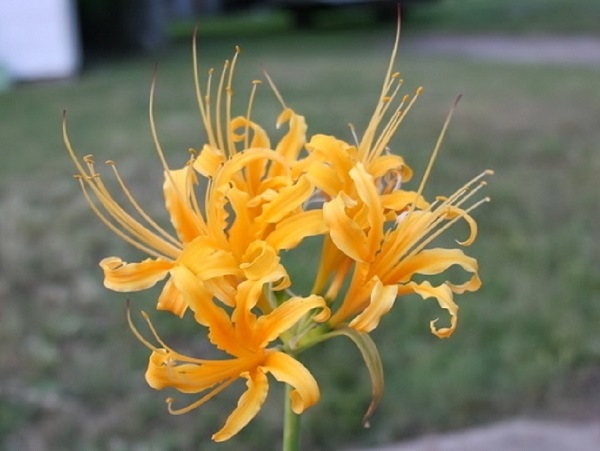
Also known as Golden Hurricane Lily, this species of Lycoris Spider Lily has bright yellow flowers that bloom in late summer to early fall. It can grow up to 20 inches tall and prefers well-drained soil in full sun to partial shade.
Electric Blue Spider Lily (Lycoris sprengeri)

This species of Lycoris Spider Lily is known for its electric blue-violet flowers that bloom in mid-summer. It can grow up to 24 inches tall and prefers well-drained soil in full sun to partial shade.
Resurrection Lily (Lycoris squamigera)
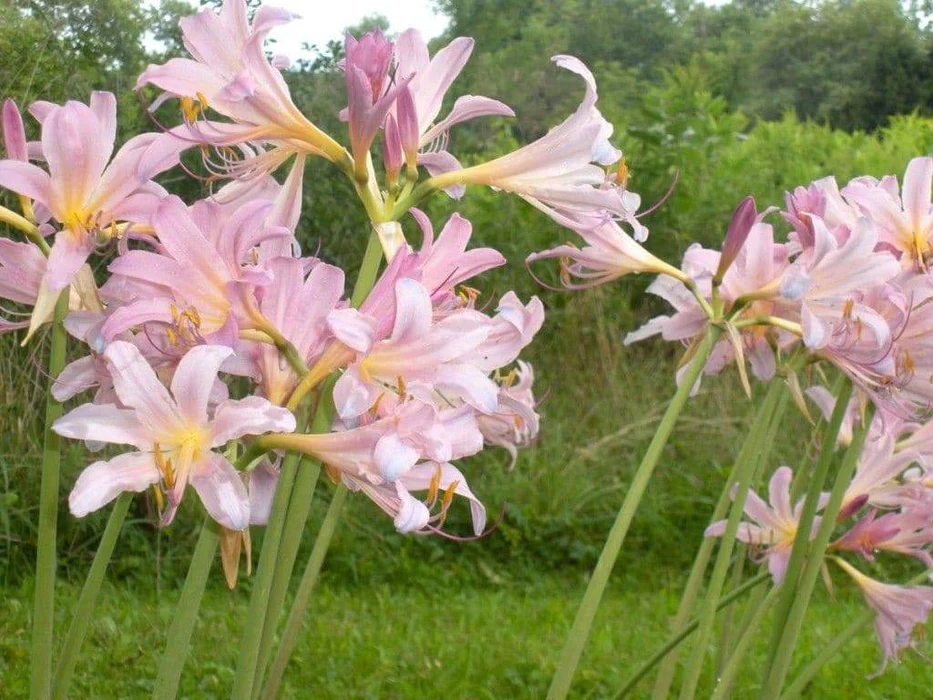
Also known as Surprise Lily or Naked Lady, this species of Lycoris Spider Lily has pink flowers that bloom in late summer or early fall. It is unique in that its flowers appear before the foliage, giving the appearance of a “resurrection” from the ground. It can grow up to 24 inches tall and prefers well-drained soil in full sun to partial shade.
Each of these species of Lycoris Spider Lilies have its unique characteristics and growing requirements, so it’s important to do your research to choose the right one for your garden or landscape.
These are just a few examples of the many different types of Spider Lily available. Each variety has unique characteristics and growing requirements, so it’s important to research to determine which type is best suited for your growing conditions.
Propagating Spider Lilies
Spider Lilies can be propagated through the division of their bulbs, typically done in the fall after the foliage has died back. Here are the steps to propagate Spider Lilies through division:
- Dig up the clump of Spider Lily bulbs you wish to divide, being careful not to damage the bulbs.
- Gently remove any excess soil from the bulbs and separate the offsets (smaller bulbs that have grown around the base of the parent bulb) from the parent bulb.
- Inspect each bulb carefully for signs of damage or disease. Any bulbs that appear damaged or diseased should be discarded.
- Plant the offsets immediately in well-draining soil. Spider Lilies prefer moist soil but not waterlogged, so ensure the soil is well-draining and amend it with organic matter if necessary.
- Plant the offsets at the same depth as the parent bulbs, with the top of the bulb just below the soil surface.
- Water the newly planted bulbs well to settle the soil around them.
- Mulch the area around the bulbs with a layer of organic material to help retain moisture and suppress weed growth.
- Care for the new bulbs as you would mature Spider Lily plants, providing them with regular watering and fertilization as needed.
Potting and Repotting Spider Lilies
Spider Lilies can be grown in pots and repotted as needed to ensure that they have enough room to grow and thrive. Here are some tips for potting and repotting Spider Lilies:
- Choose a pot at least 8 inches deep with drainage holes in the bottom. Spider Lilies prefer well-draining soil, so make sure the pot has a good-quality potting mix enriched with organic matter.
- Plant the Spider Lily bulbs in the pot with the top of the bulb just below the soil surface. Make sure that the bulbs are spaced at least 4 inches apart to allow for proper growth.
- Water the soil thoroughly after planting to ensure the bulbs are evenly moist.
- Place the pot in an area that receives partial to full sun. Spider Lilies prefer a location that receives at least 4-6 hours of direct sunlight daily.
- Water the Spider Lilies regularly, keeping the soil evenly moist but not waterlogged.
- Fertilize the Spider Lilies once a month with a balanced fertilizer to help encourage healthy growth and blooming.
- Report the Spider Lilies every 2-3 years or as needed when the bulbs have outgrown their current pot. When repotting, carefully remove the bulbs from their old pot and plant them in a new pot with fresh potting mix. Be sure to plant the bulbs at the same depth as before, with the top of the bulb just below the soil surface.
By following these tips for potting and repotting Spider Lilies, you can enjoy the beauty of these unique and striking plants in your home or garden.
Overwintering
Spider Lilies are hardy bulbs that can survive winter temperatures in many climates, but they require some care to ensure that they overwinter successfully. Here are some tips for overwintering Spider Lilies:
- Stop watering the Spider Lilies in the fall after the foliage has died. Allow the soil to dry out completely.
- Dig up the bulbs carefully with a garden fork or spade. Be careful not to damage the bulbs.
- Brush off any excess soil from the bulbs and allow them to dry in a warm, dry location for several days.
- Once the bulbs are completely dry, store them in a cool, dry location between 50-60°F (10-15°C). A garage, basement, or unheated room works well for this purpose.
- Store the bulbs in peat moss, sawdust, or vermiculite container. Do not use soil for storage, as it may attract pests or diseases.
- Check the bulbs periodically throughout the winter to ensure they remain dry and free from mould or rot.
- In the spring, about 4-6 weeks before the last frost date in your area, plant the Spider Lily bulbs in the garden or pots. Plant them at the same depth as before, with the top of the bulb just below the soil surface.
By following these tips for overwintering Spider Lilies, you can ensure that your bulbs survive the winter and bloom beautifully year after year.
How to Get Spider Lilies to Bloom?
Getting Spider Lilies to bloom requires the right growing conditions and a little bit of patience. Here are some tips for encouraging your Spider Lilies to produce beautiful blooms:
Plant the Spider Lilies in the right location. They prefer a location that receives at least 4-6 hours of direct sunlight each day, but they also need shade to protect them from the hottest afternoon sun.
Make sure the soil is well-draining. Spider Lilies prefer soil that is rich in organic matter and well-draining. If the soil in your garden is heavy and clay-like, you may need to amend it with compost or sand to improve drainage.
Water the Spider Lilies regularly. They prefer to be kept evenly moist but not waterlogged. Water deeply once a week during dry spells, and reduce watering in the fall as the foliage dies back.
Fertilize the Spider Lilies regularly. They respond well to a balanced fertilizer applied monthly during the growing season (spring and summer).
Avoid disturbing the bulbs. Spider Lilies are sensitive to disturbance, and digging or transplanting them can cause them to skip a year of blooming.
Be patient. Spider Lilies can take a few years to become established and produce blooms. Don’t be discouraged if they don’t bloom in the first year or two. They will eventually produce flowers if they are healthy and growing well.
By following these tips and providing your Spider Lilies with the right growing conditions, you can encourage them to produce beautiful, showy blooms year after year.
Common Problems With Spider Lilies
While Spider Lilies are generally easy to care for, they can be susceptible to a few common problems. Here are some of the most common issues you may encounter with Spider Lilies:
Fungal diseases
Spider Lilies can be prone to fungal diseases such as leaf spots and bulb rot. These diseases can be caused by excessive moisture, poor air circulation, or contaminated soil. To prevent fungal diseases, avoid overhead watering, properly space plants, and promptly remove any infected foliage or bulbs.
Pests
Spider Lilies can attract pests such as aphids, mealybugs, and spider mites. These pests can be controlled with insecticidal soap or neem oil and applied according to the product instructions.
Lack of blooms
If your Spider Lilies are not blooming, it may be due to insufficient sunlight, poor drainage, or a lack of nutrients. Ensure the plants get enough sunlight and water, and fertilize them regularly during the growing season.
Yellowing leaves
Yellow leaves can be a sign of overwatering, underwatering, or nutrient deficiencies. Adjust your watering schedule and fertilize the plants to correct these issues.
Bulb damage
Bulbs can be damaged by improper planting or digging and by pests such as rodents. To prevent bulb damage, plant them at the correct depth and use bulb cages or wire mesh to protect them from pests.
By monitoring your Spider Lilies for these common problems and taking prompt action when issues arise, you can keep your plants healthy and blooming beautifully.
Why should you go for Spider Lily? What are the benefits?
While Spider Lilies are primarily grown for their aesthetic appeal, there are a few additional benefits to cultivating these plants:
Low maintenance
Spider Lilies require minimal care and attention, making them ideal for busy gardeners or those new to gardening.
Attract pollinators
The bright and showy flowers of Spider Lilies can attract pollinators such as bees and butterflies to your garden, helping to promote healthy plant growth and biodiversity.
Cultural significance
Spider Lilies have a rich cultural history and are highly valued worldwide for their symbolic meanings and medicinal properties.
Long blooming period
Spider Lilies typically bloom in late summer or early fall and can continue to produce blooms for several weeks, providing a long-lasting burst of colour in your garden.
Drought tolerant
Spider Lilies are known for their ability to withstand dry conditions and thrive in areas with limited rainfall or water resources.
Pest and disease resistant
Spider Lilies are relatively resistant to pests and diseases, making them a low-maintenance and hassle-free addition to your garden.
Versatility
Spider Lilies can be grown in various settings, including garden beds, containers, and indoor spaces, making them a flexible and versatile plant choice.
Unique appearance
Spider Lilies have a distinctive and eye-catching appearance, with long, slender petals and unusual colour patterns that make them stand out in any setting.
Spider Lily Alternatives
While Spider Lilies are a beautiful and unique addition to any garden, there may be better choices for some. If you’re looking for alternatives to Spider Lilies, here are some plants that offer similar features and benefits:
Amaryllis
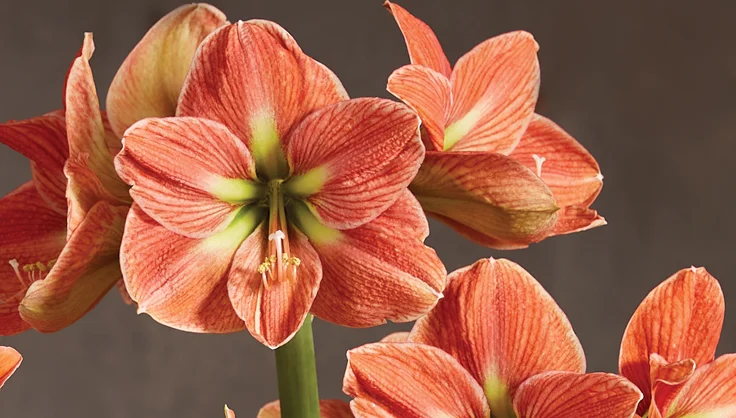
Like Spider Lilies, Amaryllis produces showy, trumpet-shaped flowers on tall stalks. They come in various colours and are easy to grow indoors or outdoors.
Crinum Lily
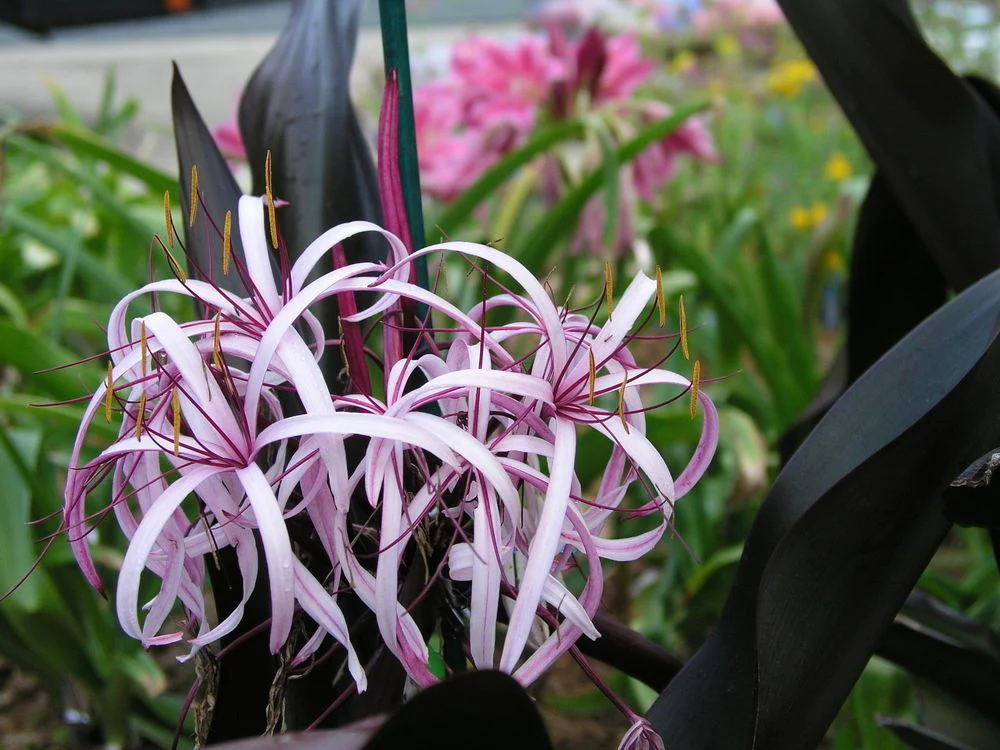
Also known as Swamp Lily, Crinum produces large, fragrant flowers on tall stems. They are easy to care for and can thrive in various conditions.
Gladiolus
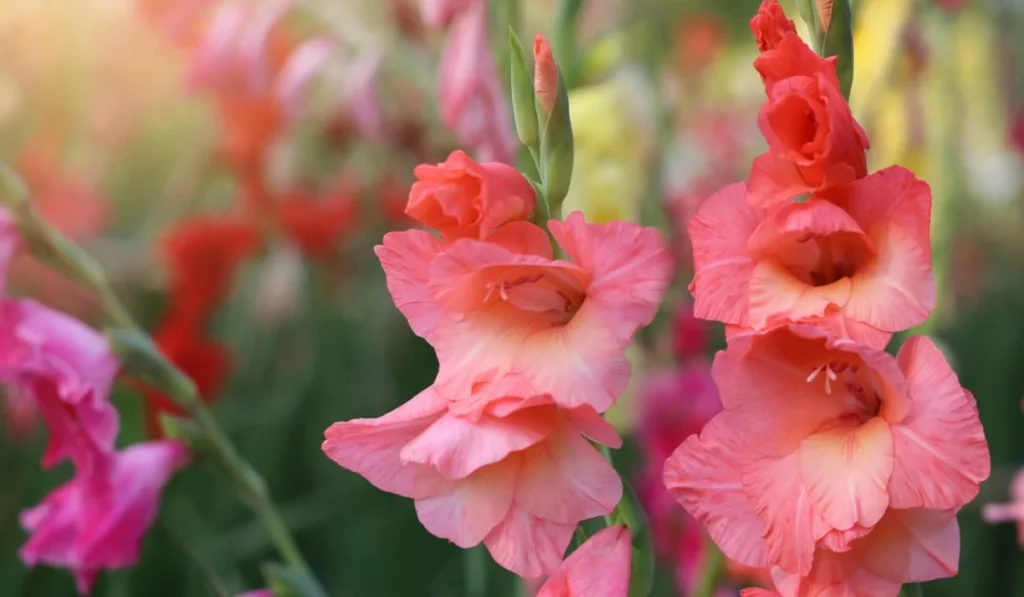
Gladiolus produces tall spikes of flowers in various colours and can be grown indoors and outdoors. They are easy to care for and add a splash of colour to any setting.
Daylilies
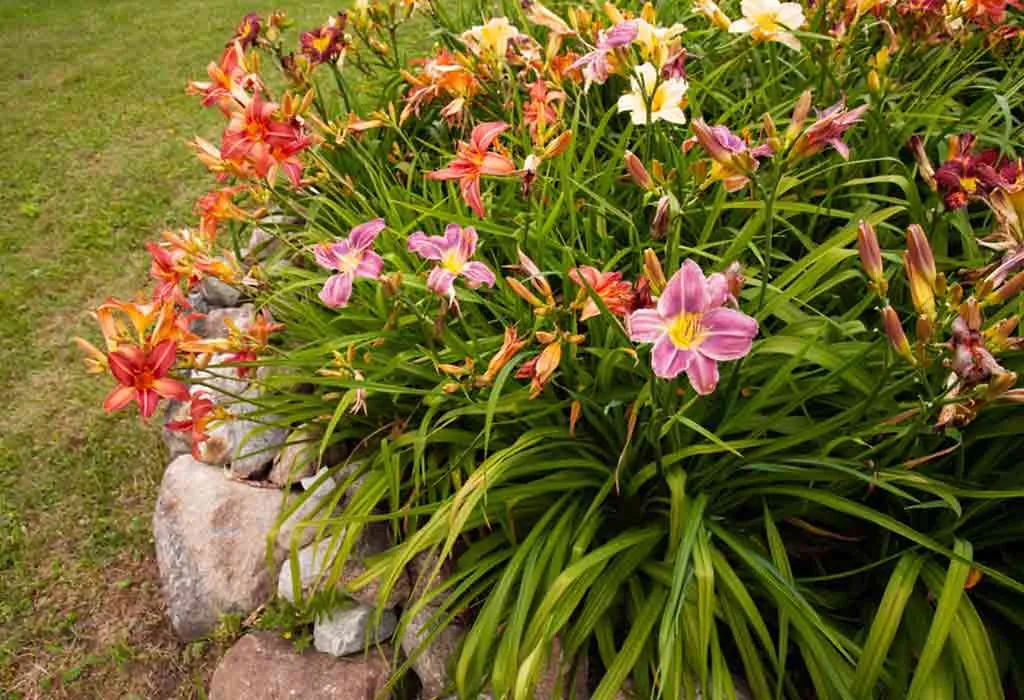
Daylilies produce a wide range of colours and sizes of flowers and can thrive in various conditions. They are low maintenance and can be used as ground cover or in garden beds.
Iris
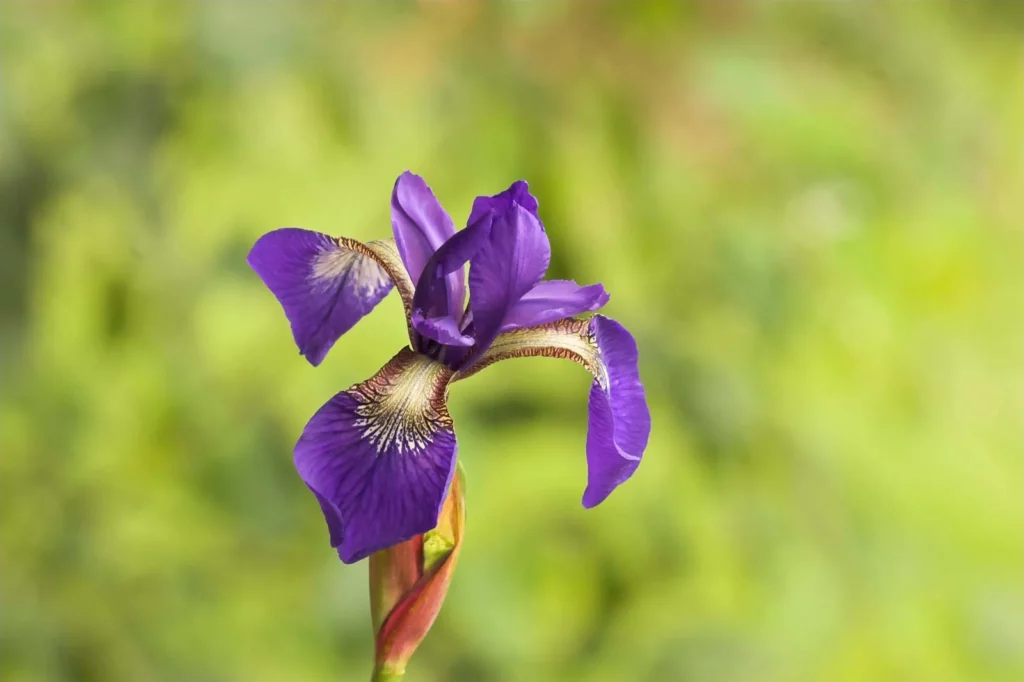
Iris produces stunning, showy flowers in various colours and can be grown in various settings. They are low maintenance and easy to grow, making them an ideal choice for beginners.
Canna Lily
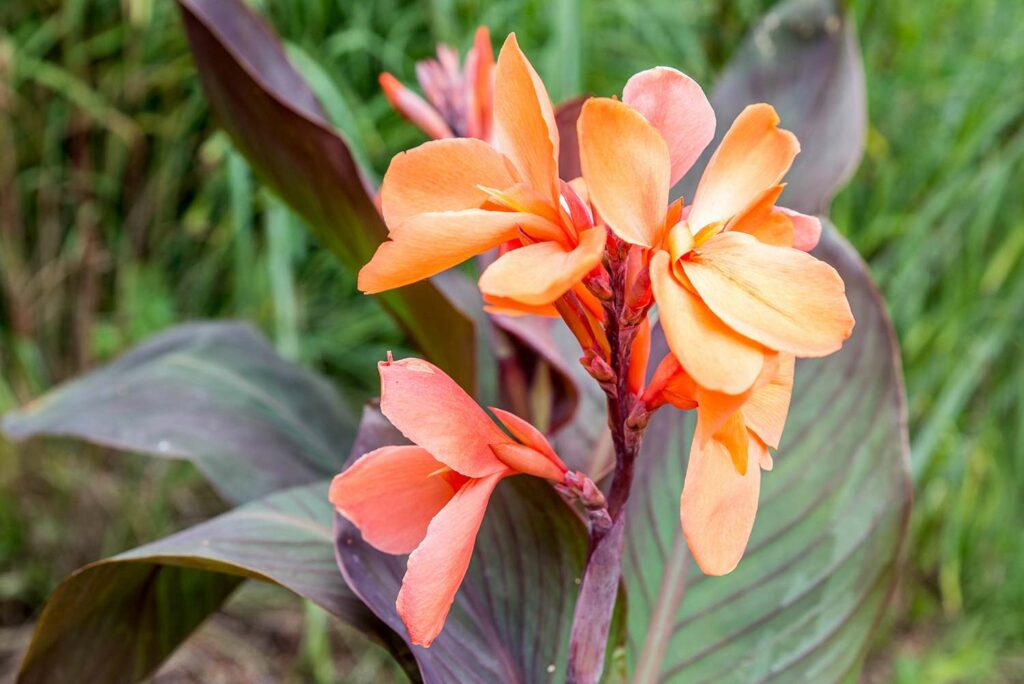
Canna Lily produces large, colourful blooms on tall stalks and can be grown in both sun and partial shade. They are easy to care for and add a tropical feel to your garden.
Lily of the Nile
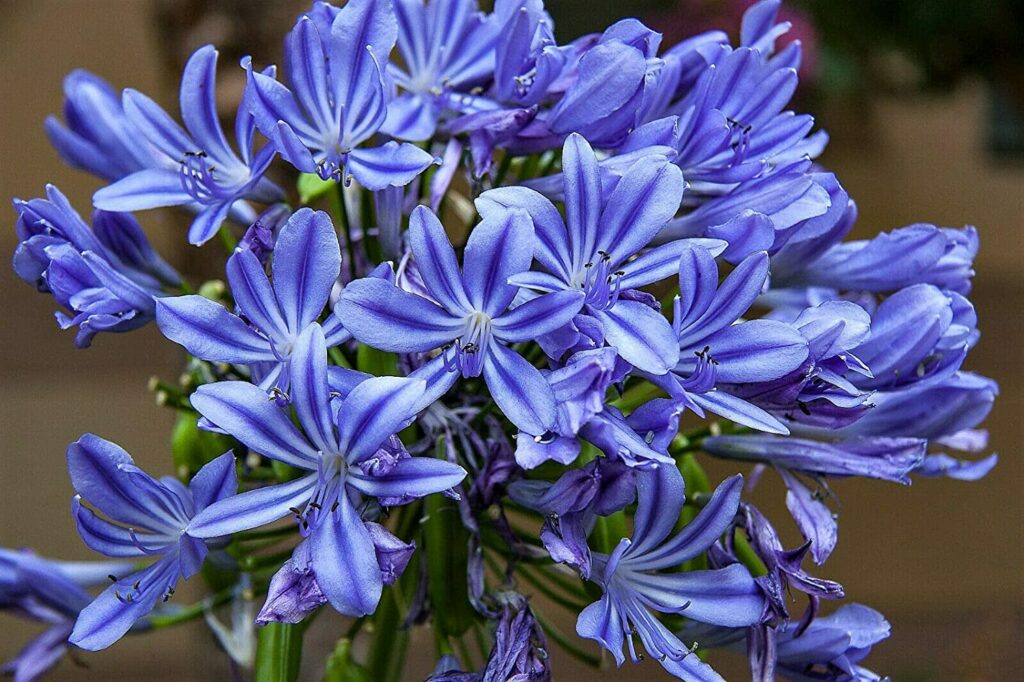
Also known as Agapanthus, Lily of the Nile produces clusters of blue or white flowers on tall stalks. They are easy to care for and can be grown in various settings.
Peruvian Lily
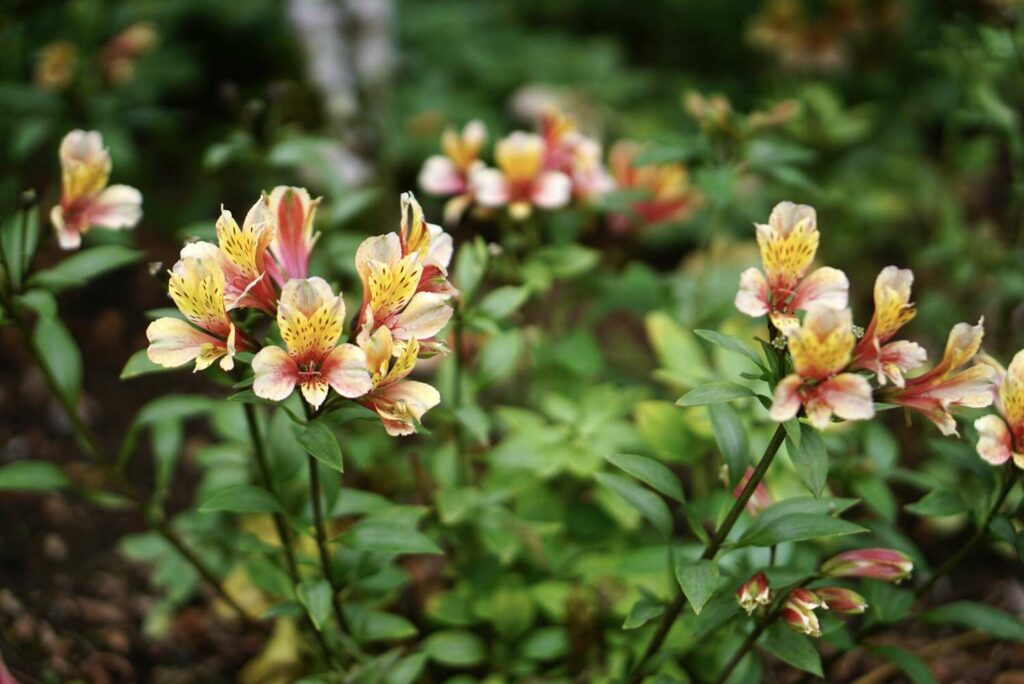
Peruvian Lily produces showy, multicoloured blooms on tall stems that can be grown indoors and outdoors. They are easy to care for and bloom repeatedly throughout the growing season.
Ranunculus
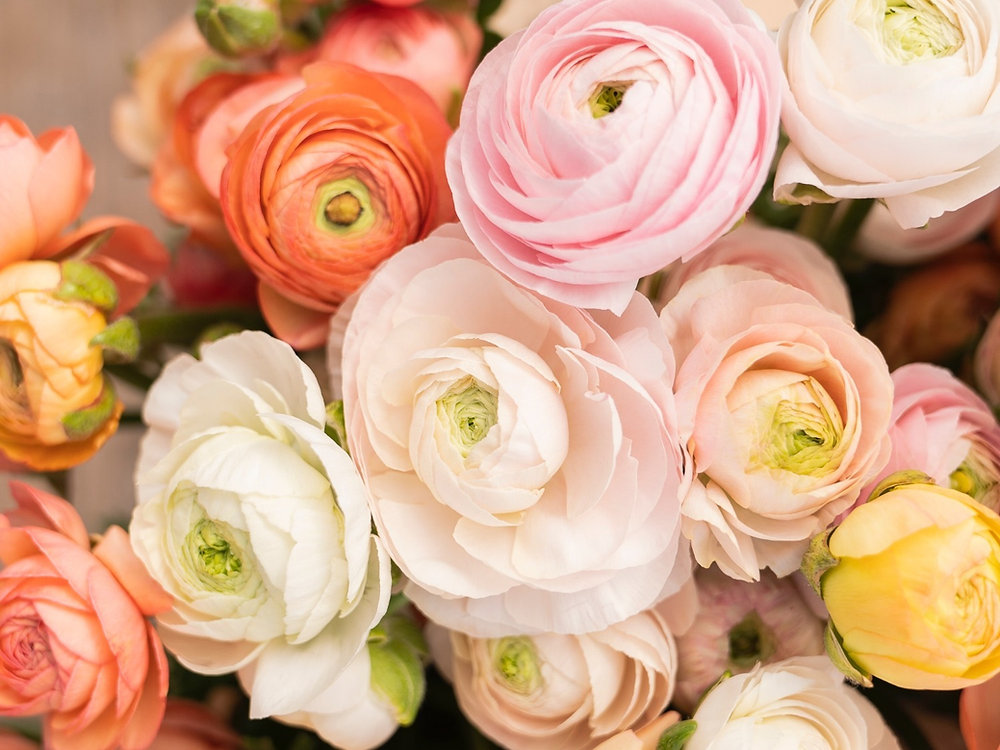
Ranunculus produces brightly coloured, ruffled flowers on tall stems and can be grown indoors and outdoors. They are low maintenance and add a touch of elegance to any setting.
Tulips

Tulips produce a wide range of colours and sizes of flowers and can be grown in various settings. They are easy to care for and add colour to any garden.
Some FAQs
What does a spider lily symbolize?
In many cultures, spider Lilies are often associated with death, mourning, and the afterlife. They are known as “corpse flowers” and are often planted near graves in Japan. However, in some cultures, they are also seen as symbols of rebirth and new beginnings.
What is the nickname of the spider lily?
The Spider Lily is sometimes called the “surprise lily” or “magic lily” because of its ability to seemingly appear out of nowhere in the late summer or early fall, long after the foliage has died back.
Is it OK to touch a red spider lily?
Touch a Spider Lily, including the red variety, is generally safe. However, you should wear gloves to avoid any potential irritation if you have sensitive skin.
What do spider lilies attract?
Spider Lilies attract hummingbirds, butterflies, and other pollinators with their brightly coloured blooms.
Are spider lilies poison?
Spider Lilies are toxic to humans and pets if ingested. The bulbs contain lycorine, a poisonous alkaloid that can cause vomiting, diarrhea, and other symptoms if consumed in large quantities.
Do spider lilies smell good?
Spider Lilies do not have a particularly pleasant fragrance. Some people describe the scent as musky or musty, while others say it smells like wet earth or decaying vegetation.
Are spider flowers poisonous?
Spider Flowers (Cleome spp.) are not related to Spider Lilies and are not toxic to humans or pets.
Do spider lilies glow?
Spider Lilies do not glow in the dark naturally. However, some people have reported appearing to glow under black light or in certain lighting conditions.
Which lily has the strongest scent?
Several lilies are known for their strong fragrance, including Oriental Lilies, Stargazer Lilies, and Casablanca Lilies.
What’s the difference between Lycoris and Crinum spider lilies?
Lycoris and Crinum are two different genera of plants commonly referred to as “spider lilies”. While they share some similarities, they have other physical characteristics and growing requirements.
Where should I place spider lilies outside my house?
Spider Lilies prefer a location with partial shade, well-draining soil, and protection from strong winds. They can be planted in garden beds, borders, or containers.
Can spider lilies grow indoors?
Spider Lilies are typically grown outdoors in garden beds or containers. While it may be possible to grow them indoors in a sunny window, they require a period of dormancy in the fall and winter, which can be difficult to replicate indoors.
Conclusion
In conclusion, Spider Lilies is a beautiful and unique addition to any garden or indoor space. They are sure to impress and delight with their striking blooms, ease of care, and long history of cultural significance. Following the planting, maintenance, and propagation guidelines outlined in this article, you can enjoy these fascinating plants for years to come. Whether you choose the traditional red variety or many other stunning colours and types, Spider Lilies will surely add a touch of magic and wonder to your garden.
Related Articles
- Carnation Flower: Plant Care and Growing Guide
- How to Grow and Care for the Cast Iron Plant?
- Spider Lily: A Guide to Growing and Caring for this Stunning Flower
- How to Grow and Care for Pussy Willows
- Zebra Plant Care: Growing Aphelandra Squarrosa At Home
- 8 Prosperous Types of Money Plants in Feng Shui to Bring Wealth and Abundance
- A Comprehensive Guide on Growing and Caring for Majesty Palm
- How to Grow and Care for Baby’s Breath?
- Rhododendron Plant: Rhododendron Care In Your Garden
- Iris Flower – All You Want To Know About Them




